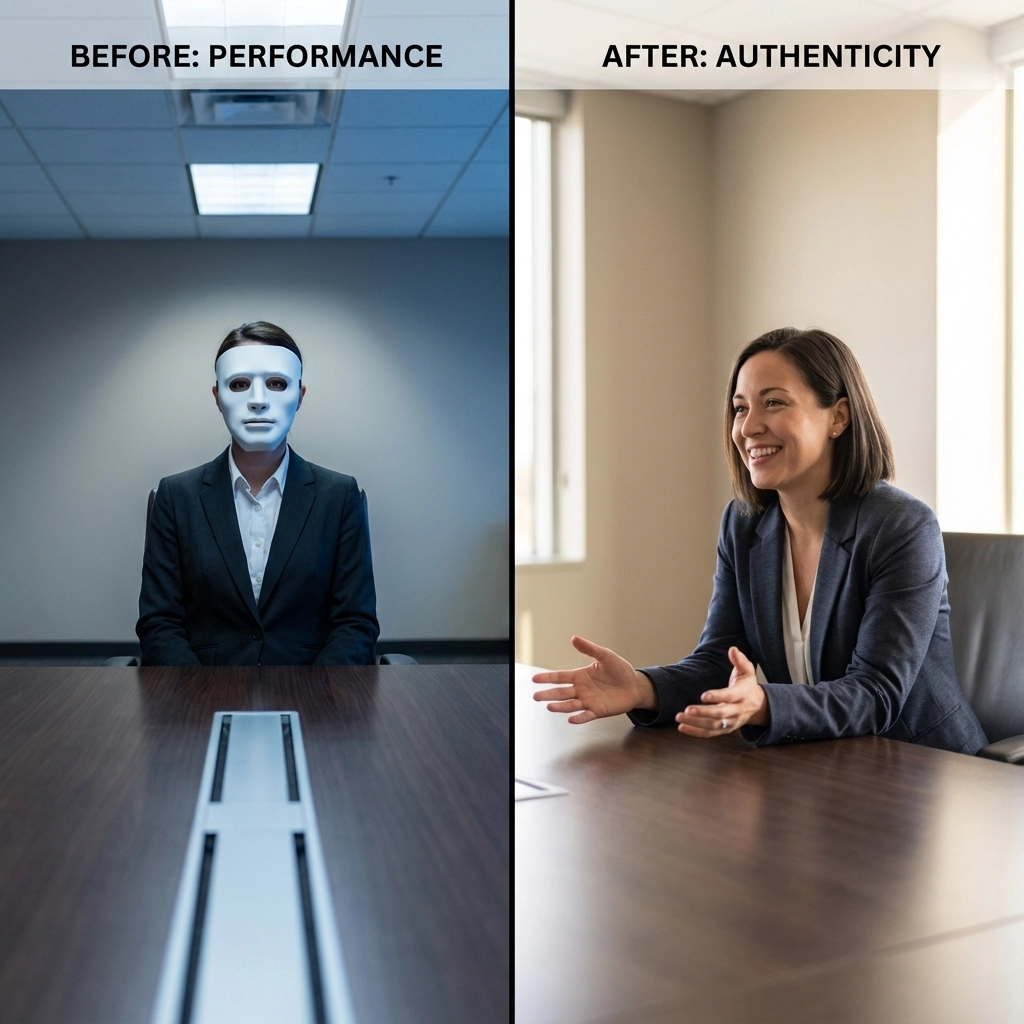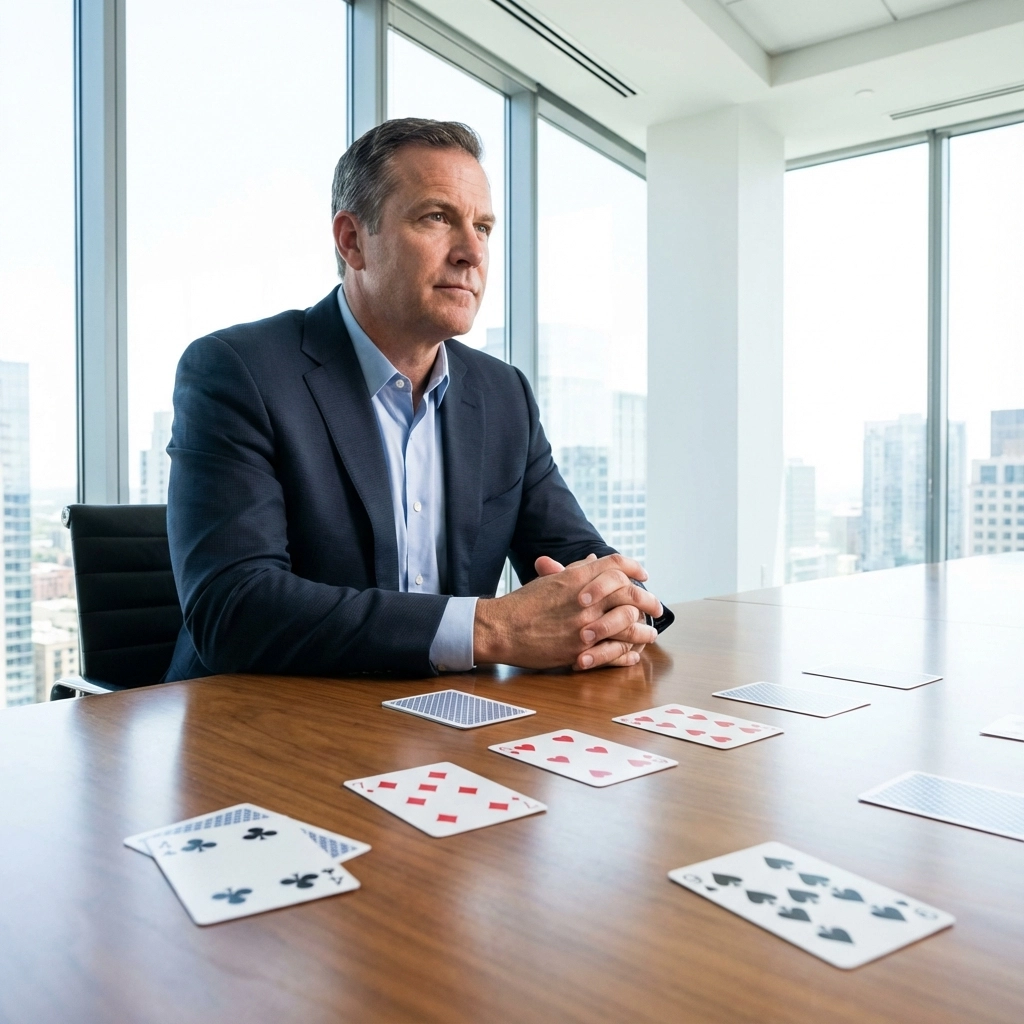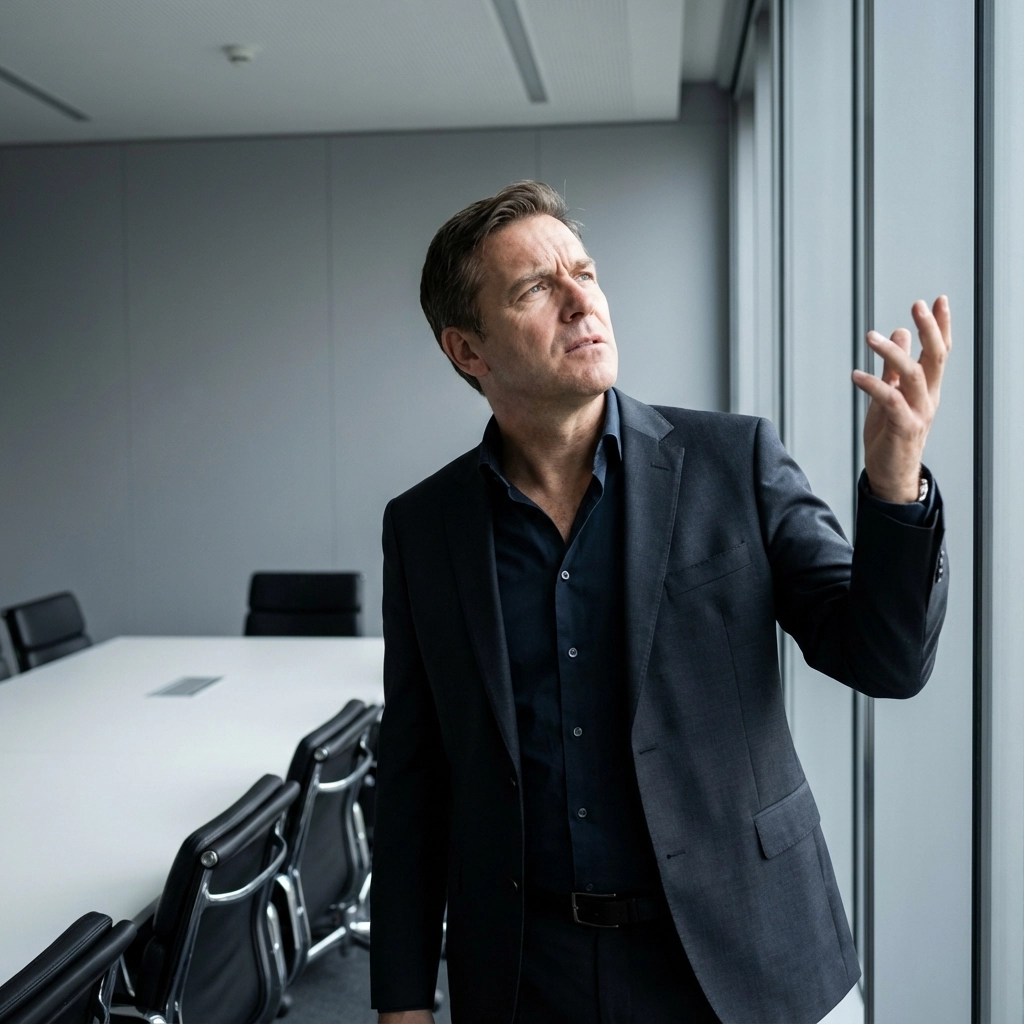
Think your poker face is still your best asset as a CEO? That maintaining the illusion of having all the answers makes you stronger? That vulnerability equals weakness in the C-suite?
Think again.
The leadership game has fundamentally shifted. And if you’re still wearing that carefully constructed executive mask, you’re not just behind: you’re actively sabotaging your own success.
Here’s what’s really happening: Authentic CEOs are crushing their masked counterparts in every metric that matters. Revenue growth. Employee retention. Innovation speed. Market responsiveness. The data is undeniable. And it’s time to carry over what we learned in 2025 into 2026.
The Death of the Executive Mask
You know what I’m talking about. That polished, unflappable persona you’ve perfected over years of climbing the corporate ladder. The one where you:
→ Never admit uncertainty, even when pivoting strategy
→ Project unwavering confidence during company-wide crises
→ Hide personal struggles behind executive presence
→ Deflect questions about company weaknesses with corporate speak
→ Maintain the facade that leadership comes naturally and effortlessly
This approach worked in 2015. Maybe even 2020. But in 2026? It’s corporate suicide.
The mask isn’t protecting you anymore: it’s isolating you. From your team. From real solutions. From the agility your business desperately needs.
Why Leadership Masks Are Failing Now
1. Your Team Can Smell the Performance
87% of employees report they can detect when leadership is being inauthentic. They know when you’re putting on a show. And guess what happens when they lose trust in your honesty?
→ Innovation dies (why suggest bold ideas to someone who won’t acknowledge real risks?)
→ Problem-solving breaks down (teams hide issues instead of surfacing them)
→ Retention plummets (people don’t want to work for someone they can’t connect with)
2. Markets Punish Inflexibility
The business landscape changes faster than ever. Companies that can’t pivot quickly get crushed. But pivoting requires admitting your current approach isn’t working.
Leadership masks make pivoting nearly impossible. Why? Because changing direction means acknowledging you were wrong. And masks don’t allow for being wrong.
3. The “Task Masking” Epidemic
New research reveals a workplace phenomenon called “task masking”: employees engaging in performative productivity to look busy rather than being genuinely productive.
Here’s the kicker: This behavior mirrors what they see from leadership. When you mask your real challenges, your team learns to mask their real work. The result? An entire organization running on performance theater instead of actual results.

The Authentic CEO Advantage
Successful 2025 leaders have thrown out the playbook. They’re winning by doing exactly what traditional leadership training told them never to do.
They Admit When They Don’t Know
Bold claim: The most powerful phrase in modern leadership isn’t “I’ve got this handled.” It’s “I don’t know, but let’s figure it out together.”
Case in point: When supply chain disruptions hit, masked CEOs spent weeks projecting confidence while privately scrambling. Authentic CEOs immediately told their teams, “We’re in uncharted territory. Here’s what we know, what we don’t know, and how we’re going to navigate this together.”
Guess which companies recovered faster?
They Share the Real Numbers
Instead of sugar-coating quarterly reports, authentic CEOs share honest assessments:
“Revenue is down 15%, but here’s exactly why and here’s our response plan. We need three months to turn this around, and I need your best thinking to get there.”
Result: Teams rallying around solutions instead of wondering what’s really happening.
They Show Human Emotion
When a major client contract falls through, authentic CEOs don’t pretend it’s “part of the plan.” They say:
“This hurts. This wasn’t what we expected. Give me 24 hours to process this, then let’s regroup and attack our response.”
Result: Teams who trust their leader’s judgment because they’ve seen authentic reactions to real challenges.
The 5-Step Unmasking Process for CEOs
Ready to ditch the performance? Here’s how People Risk Consulting helps executives make this transition without destroying credibility:
Step 1: Start with Stakes, Not Perfection
Don’t confess every uncertainty at once. Begin by sharing what’s actually at stake for the company.
“We have six months to crack this market or we’ll need to significantly restructure our approach.”
This isn’t weakness: it’s strategic transparency.
Step 2: Replace “I Know” with “Let’s Discover”
Transform your language:
- Old: “I’ve analyzed the situation and here’s the solution”
- New: “I’ve analyzed what we know so far. Here’s my hypothesis and how we’ll test it”
Step 3: Make Your Thinking Visible
Share your decision-making process, not just your decisions:
“I’m weighing three options here. Option A has this upside but this downside. Option B…”
Your team gains confidence in your judgment when they see how you think, not just what you conclude.
Step 4: Acknowledge Real Team Limitations
Instead of pretending your team has every skill needed:
“We’re missing expertise in X. We need to either develop it internally or bring it in externally. What’s our best path?”
Step 5: Celebrate Learning from Failure
When initiatives don’t work:
“This experiment failed, but here’s exactly what we learned and how it’s informing our next approach.”
Transform failure from shame into competitive intelligence.
The Business Case for Authenticity
Still think this sounds too touchy-feely? Let’s talk numbers.
Companies with authentic leadership report:
- 23% higher profitability (genuine teams work harder)
- 40% lower turnover (people stay for leaders they trust)
- 3x faster innovation cycles (teams feel safe to take risks)
- 67% better crisis recovery (transparent communication enables rapid response)
You’re Not Broken: You’re at a Critical Opportunity
If reading this makes you uncomfortable, that’s not a problem to solve: it’s a signal you’re ready to level up.
The mask served you well getting to where you are. But it won’t take you where you need to go next.
Every CEO faces this inflection point: Continue performing leadership or start actually leading.
The companies that thrive in 2026 will choose authenticity. They’re outperforming their masked competitors because they can move faster, innovate better, and retain talent that drives real growth.
Your mask isn’t protecting you anymore. It’s limiting you.
What Happens Next?
The shift from masked to authentic leadership doesn’t happen overnight. It requires strategy, support, and sometimes outside perspective to navigate successfully.
At People Risk Consulting, we’ve helped dozens of executives make this transition without losing authority or credibility. Because there’s a massive difference between authentic leadership and undisciplined oversharing.
The window for this transformation is closing. Your competitors who’ve already made this shift are pulling ahead. Your team is waiting for you to show up as a real person, not a corporate avatar.
Ready to explore what authentic leadership looks like for your specific situation?
Apply for our executive leadership masterclass where we work with CEOs one-on-one to develop authentic leadership approaches that drive real business results.
Seats are limited. Registration closes soon.
Stop performing leadership. Start actually leading.


































